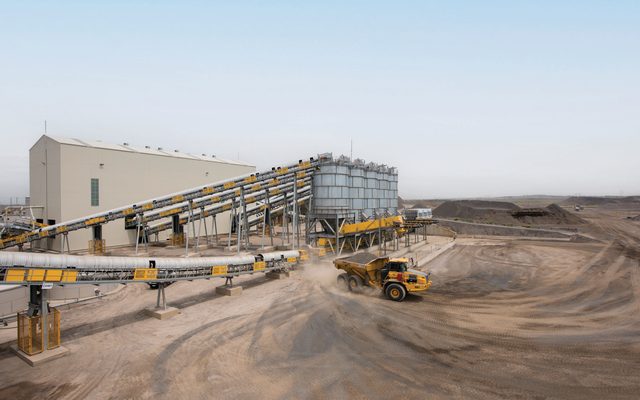This article is from the Australian Property Journal archive
RENTS in the Sydney, Melbourne and Brisbane office markets are poised to return to growth this year after rents stabilised further during the back end of 2021.
Cushman & Wakefield’s latest Office MarketBeat, prime gross effective rents in the Sydney CBD remained unchanged at $885 per sqm and incentives remained steady at 35%. This translated to a 4.7% overall decline in rents during the calendar year after an 11.3% fall in 2020.
In Melbourne, premium-grade net incentives remained at 39% for the third consecutive quarter, with A-grade net incentives at 41%. Prime net effective rents in Melbourne were fell marginally to $387 sqm in the December quarter for a 5.8% annual decline, compared to a 12.2% decline the previous year..
“Australia’s major CBD office leasing markets were largely unmoved in the second half of 2021 despite multi-month lockdowns, and have begun the year on a stable footing,” Cushman & Wakefield’s head of research Australia and New Zealand, John Sears, said.
“Rents continued to plateau in Sydney and Melbourne in Q4 and leasing activity was surprisingly strong heading into the end of 2021.”
While leasing activity in the Sydney CBD is dominated by tenants in the sub-500 sqm segment, several major leasing transactions completed were completed including the ATO securing 13,077 sqm at 255 George Street, and the College of Law leasing 5,438 sqm at 570 George Street.
Sub-lease space in Sydney also continued to decline as space was either withdrawn or taken up, and the 93,000 sqm remaining is down 40% from the peak of about 163,000 sqm,
“While the impact of Omicron cannot be ignored, we appear to be emerging from the bottom of the cycle with a healthy pipeline of leasing briefs,” Sears said.
“We anticipate a return to rental growth in the current half, which will be helped by the return of workers to CBD offices once Omicron cases recede.”
Slightly more than 150,000 sqm of new and refurbished space is anticipated to come online in the Sydney CBD this year, including nearly 69,000 sqm at Wynyard Place and over 80,000 sqm in refurbished space. Pending pre-commitment, the potential exists for over 1,000,000sqm of supply to enter the CBD market over the next eight years, including the 54,000 sqm Salesforce Tower that is 50% pre-committed, and the 88,000 sqm Quay Quarter, which is 87% pre-committed, that will be completed in 2022.
Meanwhile, Melbourne’s CBD has seen a flurry of 190,000 sqm new and refurbished stock come to the market after 351,900 sqm came online in 2020 before a lull in the first half of last year. A further 139,000 sqm is due for delivery in 2022.
Recent major deals include Aware Super’s pre-commitment of 8,000 sqm to 555 Collins Street, and WSP subleasing 6,096 sqm of space in 567 Collins Street.
Brisbane, meanwhile, has seen prime gross effective rents remain stable dipped year on year to $445, with incentives averaging 37.5% for premium and 41.5% for A-grade assets.
Metro markets soften
Rising net incentives across Melbourne’s metropolitan markets during 2021 led to downward pressure on net effective rents. Southbank recorded a 9.6% annual decline to $350 sqm, while St Kilda Road net effective rents dropped 8% to $284 sqm. The leafy boulevard has just seen Alfred Health take up 8,247 sqm at 541 St Kilda Road.
After 126,000 sqm and 171,000 sqm of completions over 2020 and 2021, the development pipeline has been disrupted by COVID. Several projects totalling 90,000 sqm will be added to the fringe office market and another 50,000 sqm next year, while 150,000 sqm of office projects are on drawing board.
“As development sites in Cremorne and Richmond become scarce, the fringe markets of Collingwood and Abbotsford are continuing to deliver opportunities,” Cushman & Wakefield said.
Metropolitan Sydney will also see new supply additions slow down, with 120,000 sqm tipped over the next 24 months after 300,000 sqm in 2020 and 200,000 sqm in 2021. New supply is expected to bounce back, rising to 145,000 sqm in 2024 and nearly 340,000 sqm in 2025.
Average face rents were mostly unchanged during the second half of 2021 and net effective rents remain subdued, down 2.1% over 2021 although the decline has slowed.
Recent supply additions to the Brisbane fringe have been relatively limited over the past two years and is expected to continue for the next few years, as developers delay construction due to the uncertainty created by COVID.
Premium and A-grade gross face rents and incentives remained stable in all the fringe markets in the second half of 2021.




